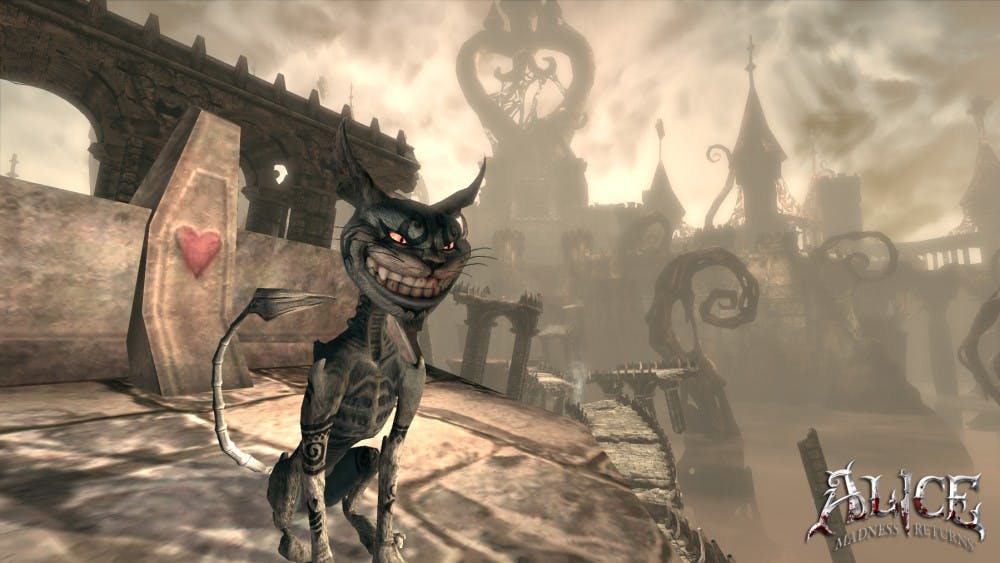Released on June 14, 2011
PC, PS3, Xbox 360
3.5/5 Pitchforks
“Alice: Madness Returns” is a beautiful and initially rewarding experience, but is eventually unsuccessful in its attempts to inspire immersion and meaning as the rabbit hole deepens.
This sequel to “American McGee’s: Alice,” a wonderfully stunning rendition of Lewis Carroll’s “Alice in Wonderland,” highlights the darker side of human imagination.
The game begins in a gloomy London insane asylum with Alice seeking psychiatric help with severe mental instability brought on after her entire family was killed in a fire.
Seeking answers to who or what started the fire, Alice adventures out into an eerie interpretation of London and discovers herself once again tumbling into a world full of whimsical characters.
Although the game includes crucial personalities like Mad Hatter, or the Walrus and the Carpenter, it lacks interesting subordinate characters to improve immersion and create a cohesive story.
“Alice: Madness Returns” has five chapters, and each individual delivery of Wonderland has enemies and allies unique to the zone, along with a completely different artistic scheme. London and its dreary inhabitants mainly serve as a transition from chapter to chapter.
But at its core, “Alice: Madness Returns” isn’t about an emotionally powerful story, it’s simply a traditional action platformer.
The levels are navigated by skillfully leaping between precarious platforms of increasing difficulty. On occasion, Alice’s miniaturized mode is used to adventure into small keyholes and discover otherwise invisible pathways and clues.
Even though the game is designed with conventional platforming in mind, it fails to utilize the exploratory possibilities platform layouts bring.
Invisible barriers frequently block Alice’s path, and fallen logs and mushrooms aren’t traversable – even though the map continues on the other side.
The largest annoyance is that although shrinking is encouraged during combat and puzzles, the level designs lack fluid integration with miniature Alice. Areas Alice should be able to fit through, such as high-hanging broken branches, she can’t.
Another disappointment is the similarity of level design between chapters. Although each chapter looks drastically different, the platform puzzles are incredibly repetitive and never gives an awe-stricken feeling.
Outside the magnificent artistic style, combat is an enjoyable highlight.
Throughout her adventures in Wonderland, Alice’s fluid combat movements are executed swiftly, and emphasize the lethality she possesses.
By momentarily shrinking, or spontaneously transforming into a collection of butterflies, Alice is able to dodge incoming attacks, or free herself from an enemy’s grasp.
Harnessing different weapon combinations is crucial for enemies such as the Teapot, who will force Alice to use multiple tactics in order to be defeated.
Although “Alice: Madness Returns” never delivers a grandeur feeling of accomplishment, and has a lackluster plotline that fizzles out in the end, its unique art style and fluid combat still made the trip down the rabbit hole pretty enjoyable.
Reach the reporter at tdmcknig@asu.edu





